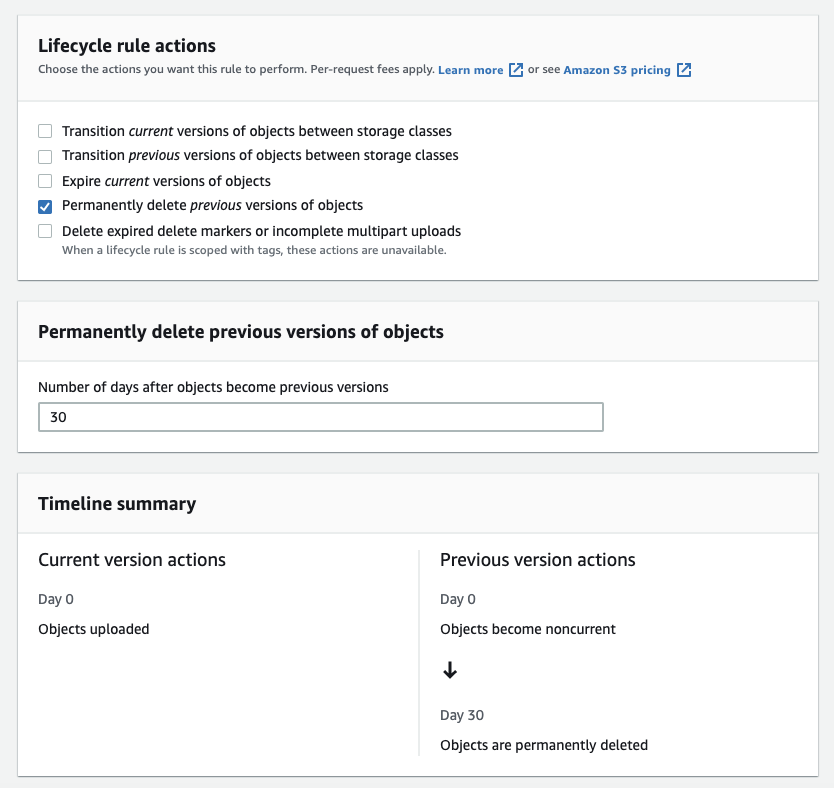Cost-Effective Encryption Solution for Storing Media Files in Amazon S3 Buckets
Question
A media firm stores files in Amazon S3 buckets encrypted by AWS KMS.
On a daily basis, millions of photos and video files are added to this bucket.
The Accounts Team is observing huge costs due to encryption of files and is looking for your suggestion in reducing cost. Which of the following can be configured to have a cost-effective encryption solution?
Answers
Explanations
Click on the arrows to vote for the correct answer
A. B. C. D.Correct Answer: B.
Amazon S3 bucket can be configured to use Amazon S3 Bucket Keys with SSE-KMS.
With this, AWS KMS generates a single bucket-level key that can be used to generate unique data keys for all new objects that will be stored in the bucket.
This avoids using individual AWS KMS data keys for each object in the bucket.
For existing objects in the Amazon S3 bucket, the COPY command can be used to have encryption using the S3 bucket key.
Options A, C & D are incorrect as there would not be any cost reduction while using these keys.
For a large number of objects, irrespective of any of these keys used, each time Amazon S3 bucket will make a request to AWS KMS for each encrypted object.
For more information on AWS KMS with Amazon S3 bucket keys, refer to the following URL,
https://docs.aws.amazon.com/AmazonS3/latest/userguide/bucket-key.html
Sure, I'd be happy to explain each of the options and their relevance to the scenario presented.
Firstly, let me give you a brief overview of AWS KMS and Amazon S3 encryption:
- AWS Key Management Service (KMS) is a managed service that allows you to create and control the encryption keys used to encrypt your data. It integrates with many other AWS services, including Amazon S3, to provide secure encryption options for your data.
- Amazon S3 provides several options for encrypting objects stored in S3 buckets. Server-side encryption can be used to encrypt data at rest, with the encryption keys managed by AWS KMS or Amazon S3 bucket keys.
Now, let's consider each of the options provided in the question:
A. Configure server-side encryption with AWS KMS using imported keys. This option involves importing your own encryption keys into AWS KMS to use for server-side encryption of S3 objects. While this can provide additional control and management over your encryption keys, it is not likely to reduce the costs associated with encryption. In fact, it may require additional costs for managing and maintaining the imported keys.
B. Configure server-side encryption with AWS KMS using Amazon S3 Bucket Keys. This option involves using the default encryption keys managed by Amazon S3 to encrypt your objects. This can be a cost-effective option, as there are no additional costs associated with using Amazon S3 bucket keys for encryption. However, it may not provide as much control and management over your encryption keys as other options.
C. Configure server-side encryption with AWS KMS using AWS-managed CMK. This option involves using AWS-managed customer master keys (CMKs) to encrypt your S3 objects. This is a cost-effective option as there are no additional costs associated with using AWS-managed CMKs for encryption. It also provides some control and management over your encryption keys. However, it may not provide as much control as using customer-managed CMKs.
D. Configure server-side encryption with AWS KMS using customer-managed CMK. This option involves using your own customer-managed CMKs to encrypt your S3 objects. This can provide the most control and management over your encryption keys, but may also incur additional costs for managing and maintaining the keys.
Given the scenario provided, option B (Configure server-side encryption with AWS KMS using Amazon S3 Bucket Keys) would likely be the most cost-effective solution, as it does not involve any additional costs for managing encryption keys. However, depending on the specific needs of the media firm, options C or D may also be viable solutions that provide additional control and management over the encryption keys.